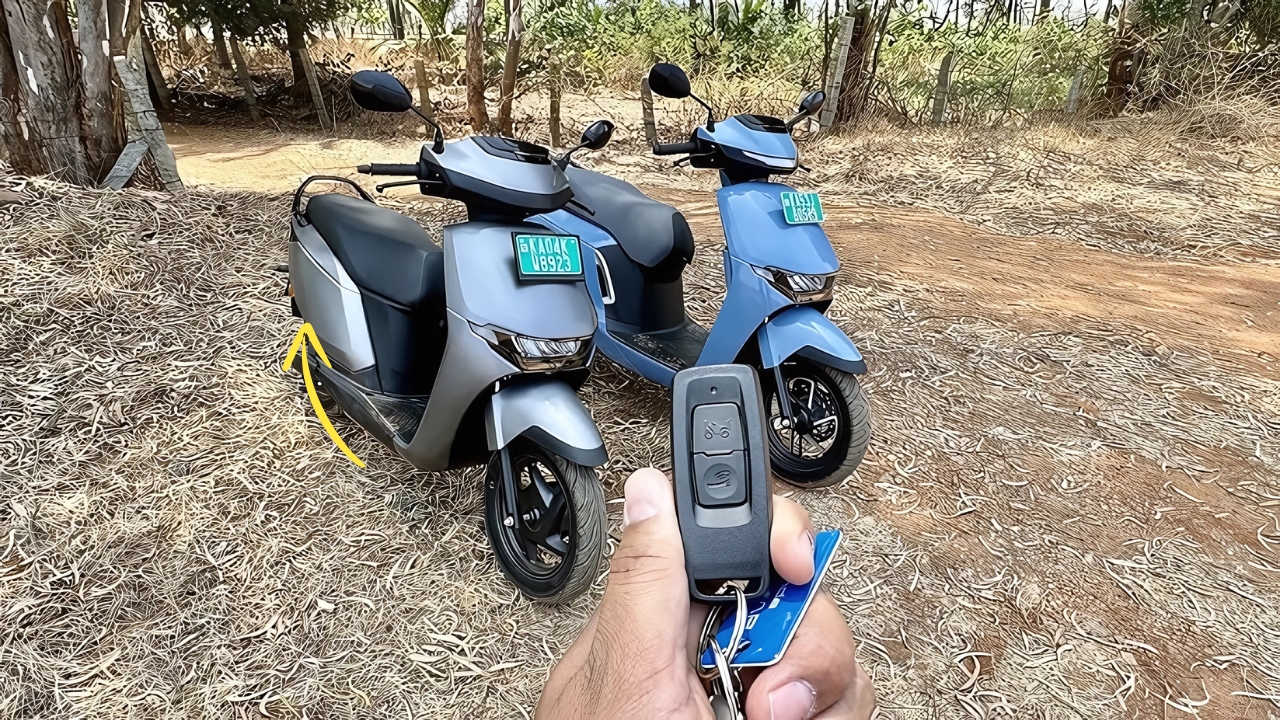Honda Activa EV : The Indian two-wheeler market stands at the threshold of an electric revolution, and Honda Motorcycle and Scooter India appears ready to lead this transformation with its anticipated Activa EV. Building upon decades of trust and reliability established by the conventional Activa series, this electric variant promises to merge familiar practicality with cutting-edge sustainable technology.
Market Transformation: From Petrol to Electric Mobility
Honda’s decision to electrify the Activa nameplate represents more than just technological advancement—it signals a fundamental shift in how India’s largest scooter manufacturer views the future of urban transportation. The Activa brand has dominated Indian roads for over two decades, becoming synonymous with dependable daily commuting.
The electric transition addresses growing environmental concerns while maintaining the core values that made Activa a household name. Urban pollution levels and rising fuel costs have created consumer demand for sustainable alternatives that don’t compromise on convenience or reliability.
Industry analysts suggest that leveraging the Activa brand for electric mobility could accelerate mainstream adoption of electric two-wheelers in India. The familiar nameplate provides psychological comfort to buyers hesitant about embracing new technology, potentially bridging the gap between traditional and electric mobility.

Battery Technology: Powering Sustainable Commutes
Early reports suggest the Activa EV will feature advanced lithium-ion battery technology designed specifically for Indian riding conditions. The battery pack is expected to deliver a practical range of 80-100 kilometers on a single charge, addressing the daily commuting needs of most urban riders.
Charging infrastructure compatibility appears to be a key consideration, with the scooter likely supporting both home charging through standard household outlets and public fast-charging stations. The removable battery design, if implemented, would allow users to charge batteries indoors, eliminating range anxiety for apartment dwellers.
Battery durability under Indian climate conditions has reportedly received significant attention during development. The tropical heat, monsoon humidity, and dusty conditions pose unique challenges that require robust battery management systems and weatherproofing measures.
Performance Characteristics: Silent Efficiency Meets Familiar Handling
The electric powertrain promises to deliver instant torque that could make city riding more responsive than conventional Activa models. This immediate power delivery particularly benefits stop-and-go traffic scenarios common in Indian urban environments.
Top speed specifications remain modest, focusing on city-friendly performance rather than highway capabilities. This approach aligns with typical Activa usage patterns where riders prioritize fuel economy and comfort over outright performance.
The regenerative braking system, if included, would help extend range while providing familiar braking feel. This technology could prove particularly beneficial during the lengthy downhill stretches common in India’s hilly regions.
Design Philosophy: Evolution Within Tradition
The Activa EV’s design reportedly maintains the visual DNA that makes Activa instantly recognizable while incorporating modern electric vehicle aesthetics. The familiar step-through design and comfortable seating position remain unchanged, ensuring existing Activa riders feel immediately at home.
Storage solutions appear enhanced, with the under-seat compartment potentially offering more space due to the compact electric motor design. Additional storage for charging cables and personal electronics reflects the needs of modern urban commuters.
Build quality standards are expected to match or exceed conventional Activa models, with weather resistance receiving particular attention. The absence of conventional engine components allows for better weight distribution and potentially improved handling characteristics.
Maruti Alto K10 – 28kmpl mileage car comes with affordable price in market
Charging Infrastructure: Addressing Range Concerns
Honda’s approach to charging infrastructure will likely determine the Activa EV’s market success. Partnerships with charging network providers and strategic placement of fast-charging stations in urban areas could address consumer concerns about range limitations.
Home charging solutions need to accommodate India’s diverse housing situations, from independent homes to high-rise apartments. The development of portable charging solutions and swappable battery options could provide flexibility for different user scenarios.
Charging speed represents a crucial factor for commercial users like delivery personnel who depend on scooters for livelihood. Fast-charging capabilities that minimize downtime could make electric scooters viable for professional applications.
Honda Activa EV Economic Impact: Redefining Transportation Costs
The total cost of ownership for the Activa EV could prove significantly lower than petrol variants despite higher initial purchase prices. Electricity costs per kilometer typically amount to a fraction of petrol expenses, creating substantial long-term savings for regular users.
Maintenance requirements should decrease dramatically with fewer moving parts and no need for oil changes, air filter replacements, or spark plug servicing. This reduction in maintenance complexity could appeal to users seeking hassle-free ownership experiences.
Government incentives for electric vehicles, including subsidies and reduced registration fees, could further improve the value proposition and accelerate adoption among price-sensitive buyers.
